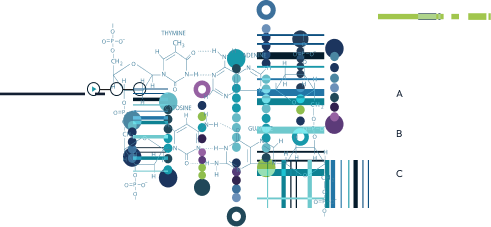APOE Status

Certain APOE genotypes have been associated with an increased risk of developing late-onset Alzheimer disease (AD). The APOE gene has three major allelic variants (ε2, ε3, and ε4). Only the ε4 allele, which has been shown in functional studies to alter the function of the APOE protein1-5, has been linked to AD. Late-onset AD (age >60 years) is a complex disorder that may involve multiple susceptibility loci influenced by environmental factors6, indicating that pathogenic APOE status alone is not sufficient to cause disease. Recently, the APOE ε4/ε4 genotype has been described as a genetically distinct form of AD with earlier onset7.
Genetic counseling is strongly recommended to review these results. Note: the genotype-risk associations indicated below are only for AD.
| Genotype | Risk association | Interpretation |
|---|---|---|
ε4/ε4 | Established risk | This genotype represents the presence of two copies of the ε4 allele. Individuals homozygous for the ε4 allele (APOE ε4/ε4) have an 8 to 15-fold increased lifetime risk of developing late-onset AD8,9. Based on the current evidence, APOE ε4/ε4 is interpreted as an established risk genotype for late-onset AD. |
ε3/ε4 | Established risk | This genotype represents the presence of one copy of the ε4 allele and one copy of the e3 (reference) allele. Individuals heterozygous for the ε4 allele (APOE ε3/ε4) have a moderately increased risk of developing late-onset AD (~2-3 fold in Caucasians8). Based on the current evidence, APOE ε3/ε4 is interpreted as an established risk genotype for late-onset AD. |
ε2/ε4 | Established risk | This genotype represents one copy of the ε2 allele and one copy of the ε4 allele. Individuals heterozygous for the ε4 allele (APOE ε2/ε4) have a moderately increased risk of developing late-onset AD (~2-3 fold in Caucasians8). Based on the current evidence, APOE ε2/ε4 is interpreted as an established risk genotype for late-onset AD. |
ε2/ε2 | No known risk | This genotype represents the presence of two copies of the ε2 allele. The ε2 allele has been associated with a reduced risk of developing late onset AD8. Based on the current evidence, APOE ε2/ε2 is interpreted as a genotype of no known risk for late-onset AD. |
ε2/ε3 | No known risk | This genotype represents the presence of one copy of the ε2 allele and one copy of the ε3 (reference) allele. The ε2 allele has been associated with a reduced risk of developing late-onset AD8. Based on the current evidence, APOE ε2/ε3 is interpreted as a genotype of no known risk for late-onset AD. |
ε3/ε3 | No known risk | This genotype represents the presence of two copies of the ε3 (reference) allele. The ε3 allele has not been associated with an increased risk of developing late-onset AD8. Based on the current evidence, APOE ε3/ε3 is interpreted as a genotype of no known risk for late-onset AD. |
